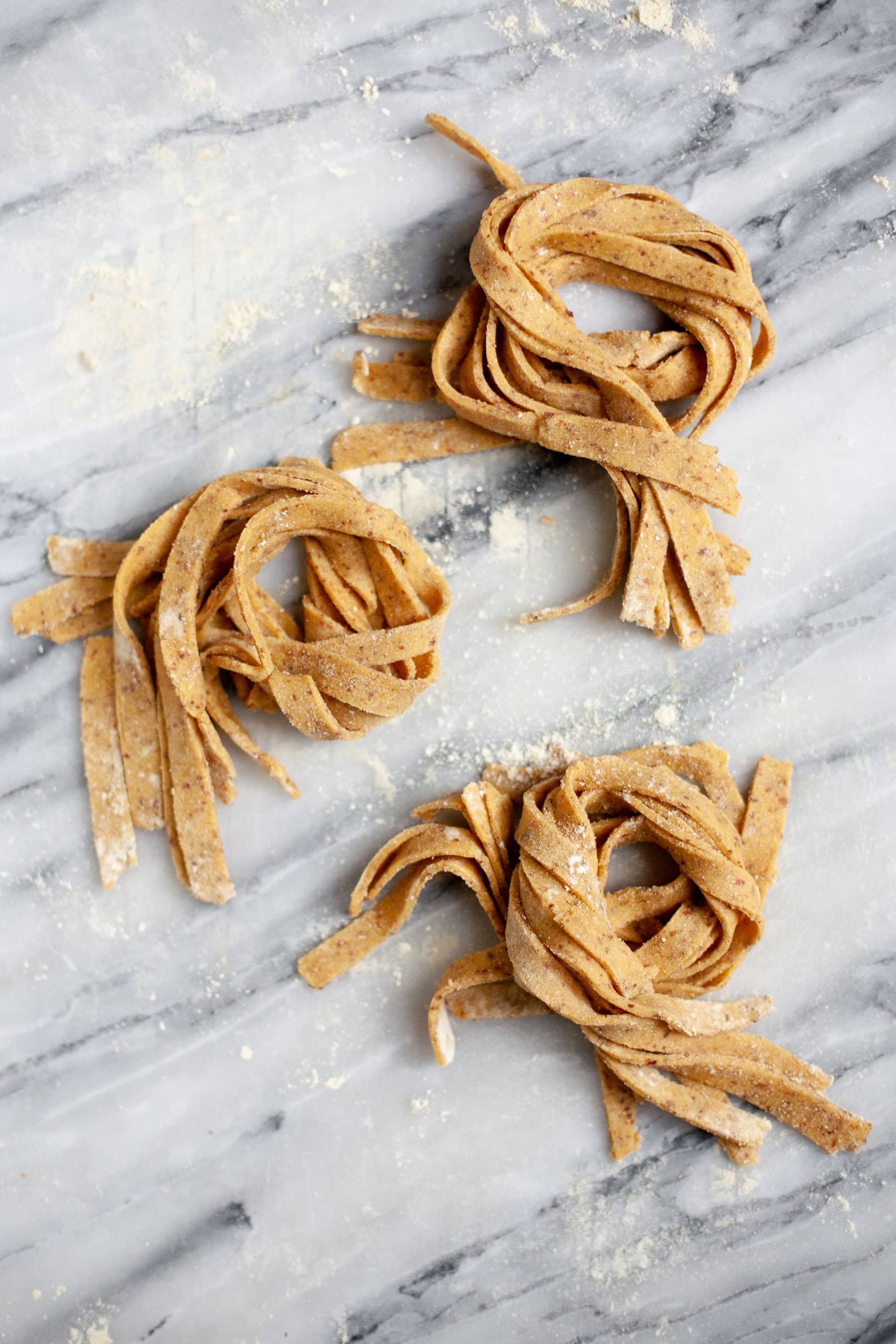Chickpea flour is one of my favorite gluten-free flours to experiment with in the kitchen. Made from finely ground chickpeas (garbanzo beans), the flour is packed with protein and fiber. It has just a slight chickpea flavor that can be either complimented or hidden with other flavors, depending on your end goal.
So far, we’ve made pancakes, socca, and the world’s creamiest and smoothest hummus with chickpea flour. Seriously, it is worth buying a bag of the stuff just for the hummus. You can normally find it in the gluten-free baking section of your grocery store. We buy Bob’s Red Mill brand.
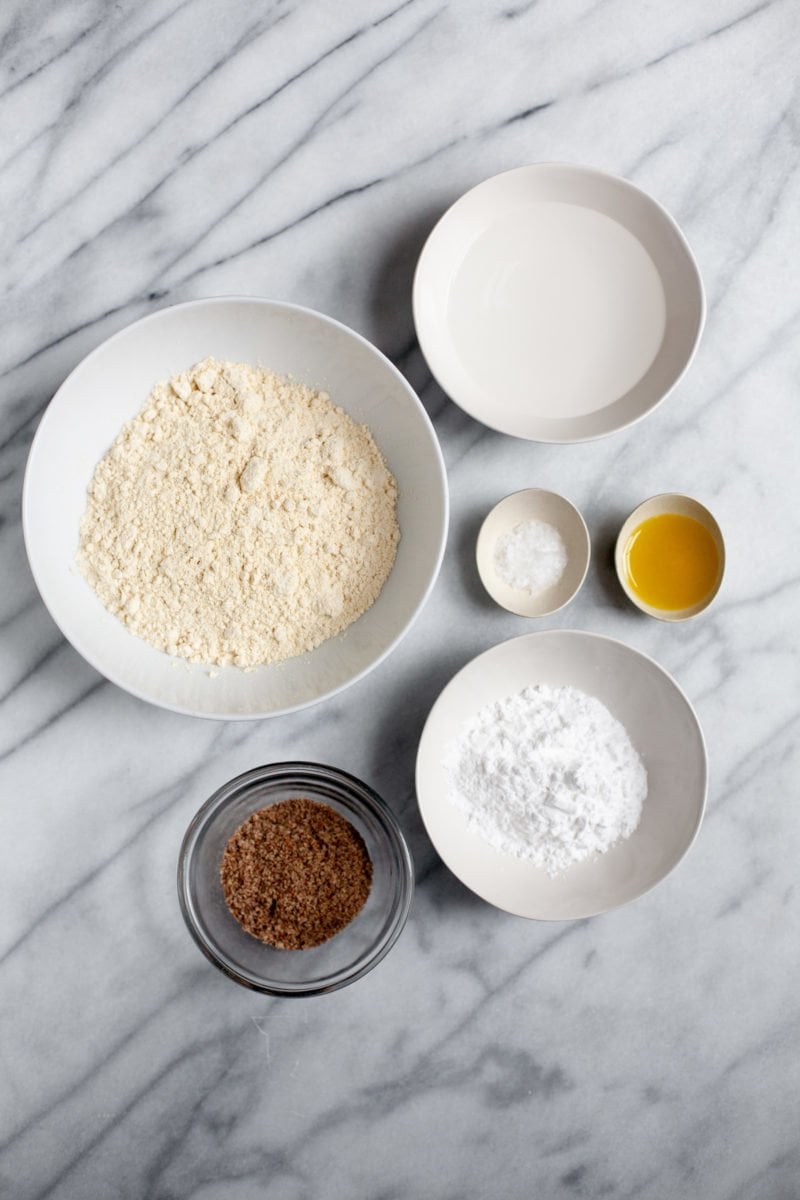
Besides the hummus, my favorite thing to come out of the discovery of chickpea flour is homemade pasta. The beauty of this pasta dough is in its total simplicity. Just a handful of ingredients– and one happens to be water. It doesn’t get much easier than that.
The end result is a soft pasta with a slightly nutty flavor from the flaxseed. You won’t be fooling any die-hard white/refined pasta fans, but if you tend to like more hearty carbs, this is a pasta for you. We paired it with some vegan roasted red pepper pesto, and it was an amazing combo.
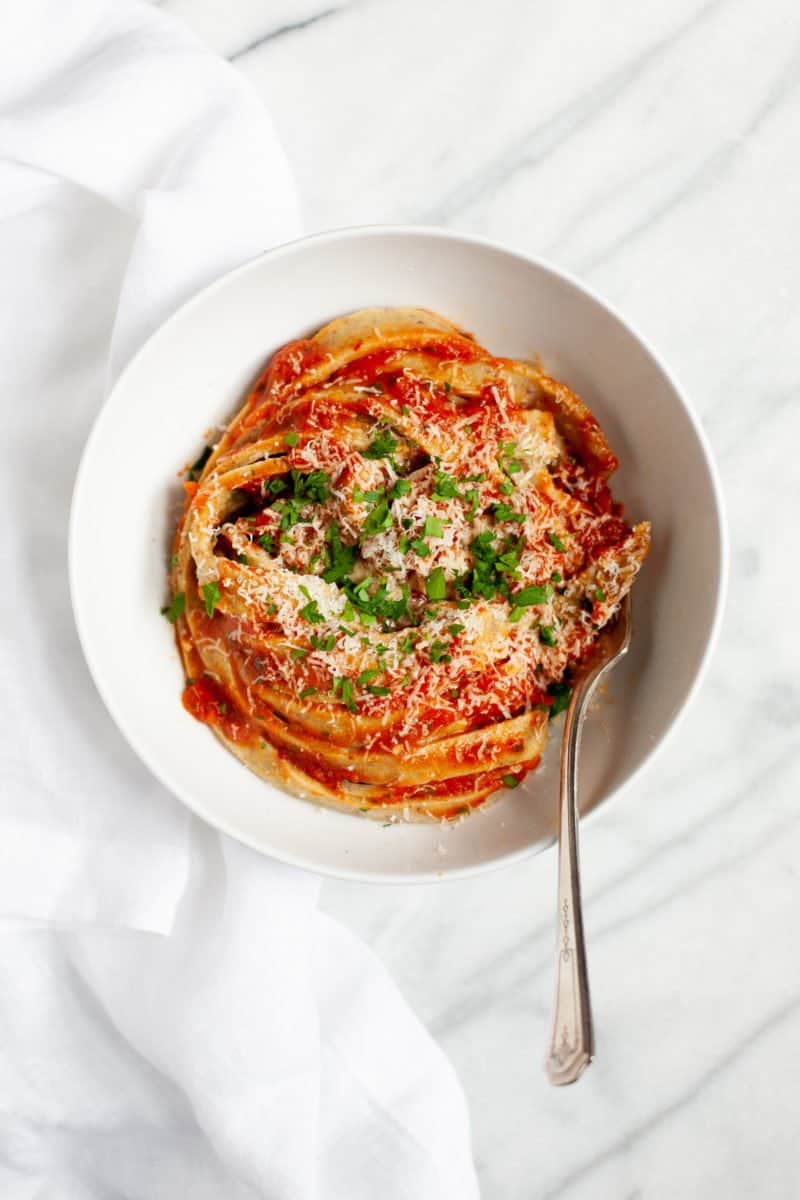
My favorite pasta-making method is 100% (wo)man-powered. I pile up the flour on a board, make a well, and then dump in the egg (or in this case, flax egg). Then I slowly incorporate the flour with the wet ingredients until it forms into a nice solid dough. At first, it always seems like there is way too much flour, but I promise it’ll all combine nicely if you just keep working it. Be patient.
If you have a pasta roller and cutter, awesome blossom! Go ahead and use those to your liking. I do not. So I used my good ol’ rolling pin and pizza cutter. The key to good pasta is rolling it out very, very thin. Thinner than you think it should be. The pasta will double or triple (or even more) in thickness from absorbing the cooking water.
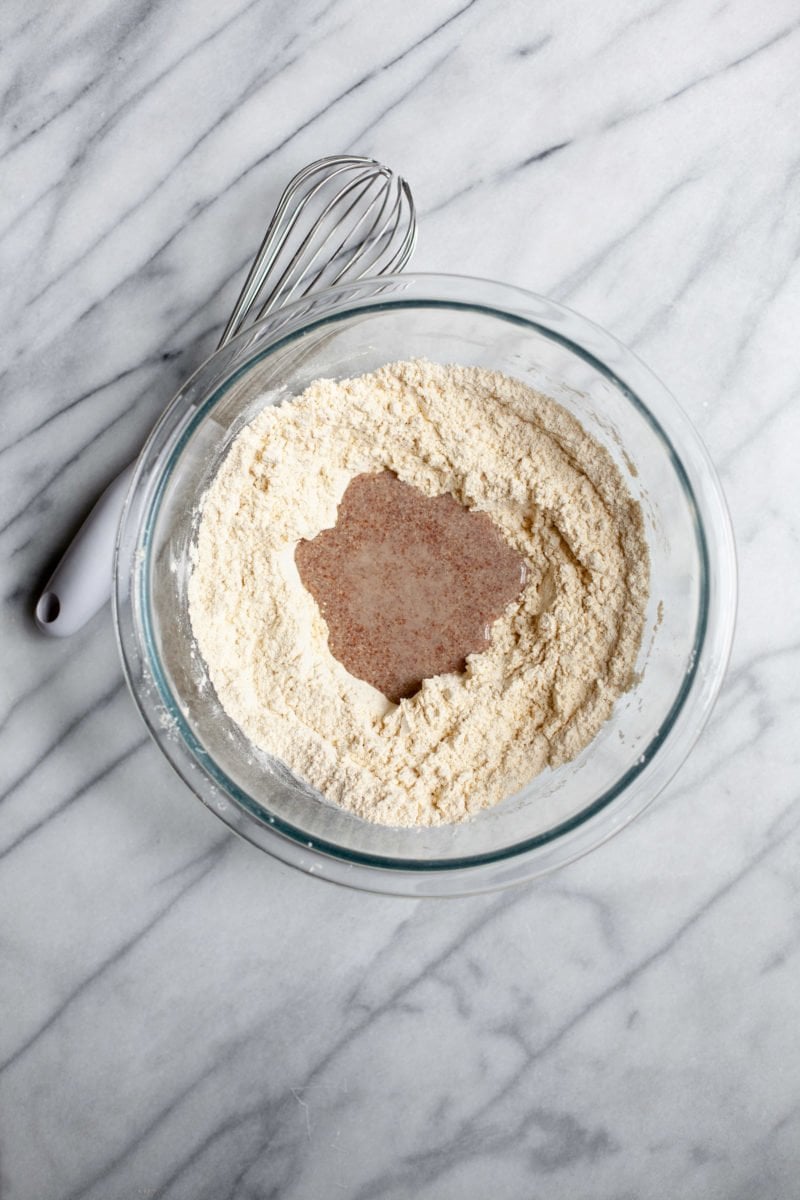
If you are going the rustic simple method, like I did, try to stick with pasta shapes that can accept some imperfection. Farfalle (bow tie pasta) is perfect for those of us without a pasta cutter. Just cut into squares and pinch, and you have some adorable, rustic bow ties. Pappardelle—which are big, long, wide noodles like the ones pictured here—work perfectly, too!
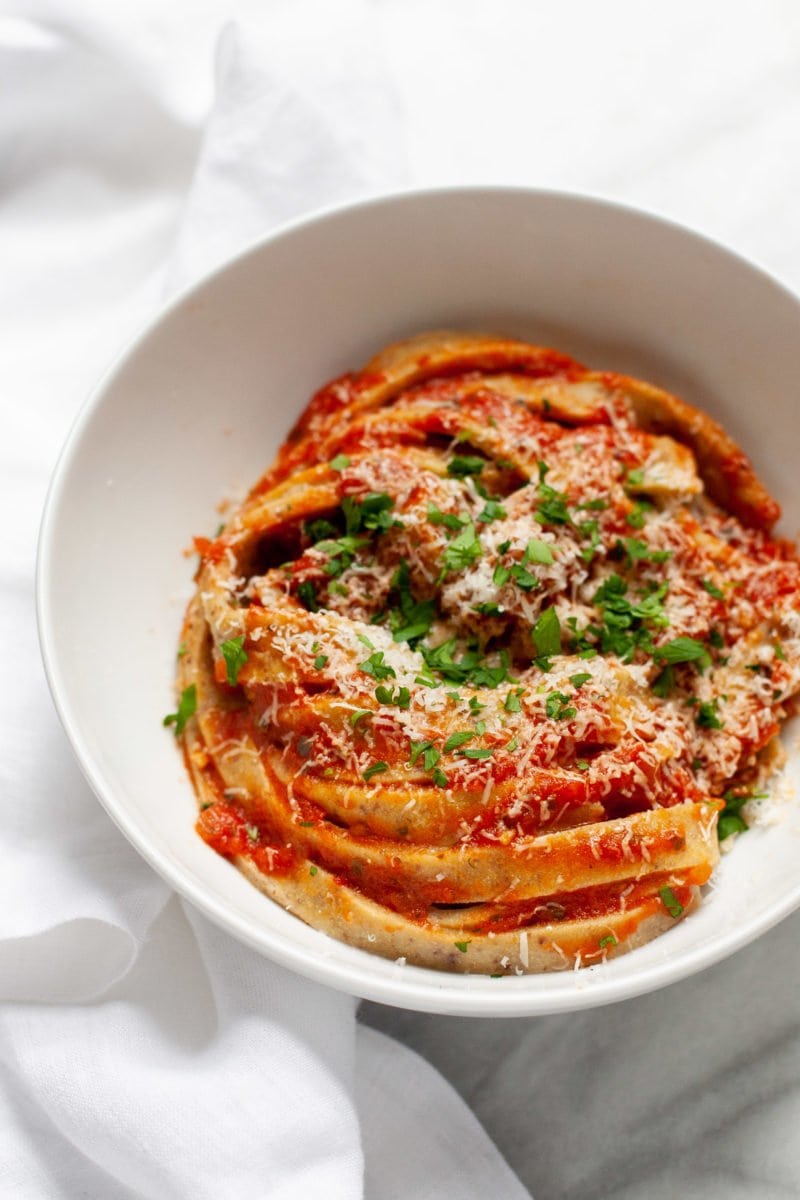
When I first made this recipe, I did it with just three ingredients—flaxseed, chickpea flour, and water—and the end result was manageable, but was a bit tricky to work with when forming into pasta.
After a bit of retesting, we figured out that adding some fat (in the form of olive oil) and some stickiness (in the form of tapioca flour) really helps to make the pasta a lot easier to work with. We’ve updated the recipe below with the new measurements, but if you liked the old version, you can download that recipe in the header of the recipe card or right here.
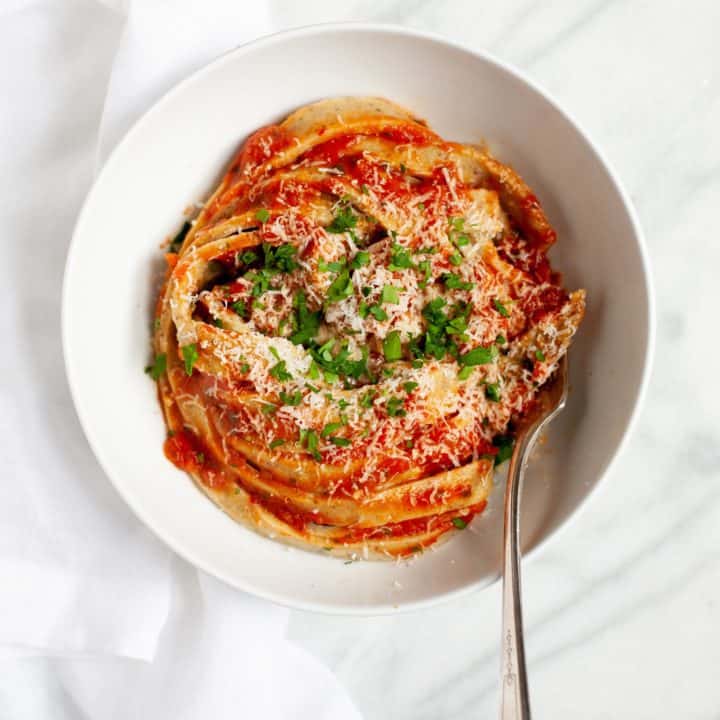
Gluten-Free and Vegan Chickpea and Flaxseed Homemade Pasta
Specialty diets don’t need to put a stop to homemade pasta night– this Chickpea and Flaxseed Homemade Pasta is vegan, gluten-free, and totally delicious!
We’ve updated the recipe above with new measurements, but if you liked the old version, you can download that recipe right here.
Ingredients
- 2 tablespoons (15 grams) golden flaxseed meal
- 6 tablespoons (90 grams) warm water
- 1 1/2 cups (142 grams) chickpea flour
- 1/4 cup (32 grams) tapioca flour
- 1/2 teaspoon (3 grams) sea salt
- 2 teaspoons (9 grams) olive oil
Instructions
- Mix the flaxseed and warm water in a small bowl and set aside for about 10 minutes, or until thickened. Meanwhile, whisk together the chickpea flour, tapioca flour, and salt in a large bowl.
- Make a well in the middle of the dry ingredients and add the flaxseed and water mixture. Stir until large crumbles form, and then add the oil and knead with your hands until the dough comes together and can be formed into a ball.
- Wrap the dough in plastic wrap and set aside for 20-30 minutes.
- Bring a pot of salted water to a boil.
- Dust a large surface, your hands, and a rolling pin with chickpea flour, and roll the dough out until very thin. The dough is tough, so this will be a bit of a workout. Slice into long strips 1/2-inch wide to make fettucine (or cut and fold into your desired shape).
- Once the water has come to a rolling boil, add the pasta and cook for 1-3 minutes, or until al dente. If the pasta is cooked for too long, it will begin to break into pieces. Drain and serve hot with your favorite sauce.
Nutrition Information:
Yield: 2 Serving Size: 1 servingAmount Per Serving: Calories: 591Total Fat: 21gSaturated Fat: 2gTrans Fat: 0gUnsaturated Fat: 18gCholesterol: 0mgSodium: 180mgCarbohydrates: 87gFiber: 7gSugar: 0gProtein: 14g
At Wholefully, we believe that good nutrition is about much more than just the numbers on the nutrition facts panel. Please use the above information as only a small part of what helps you decide what foods are nourishing for you.

